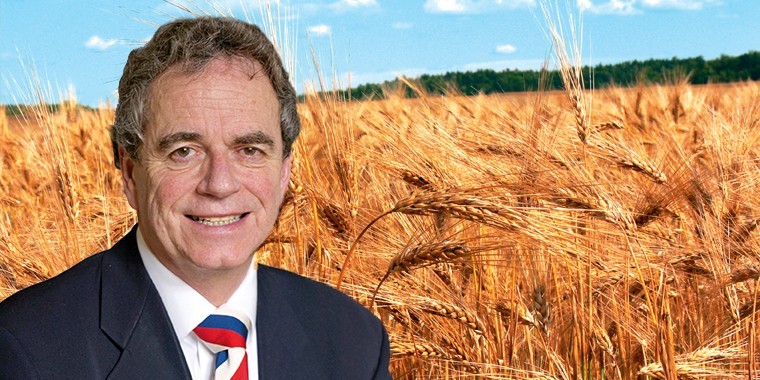When we had temperatures of more than 30° in June, there was an expectation of an early, perhaps too early, dry harvest. Now on 31 July we still have winter barley, and very sorry looking oilseed to combine.
That said some of the oilseed yields have been better than last year – which isn’t difficult. Winter barley has had better yield and much better bushel weight.
So, so far not so bad. But we await, with some concern, the effect of the last two weeks of intermittent rain on the standing crops of potential milling wheat and spring malting barley. A few early samples of wheat in the South East have had good hagbergs, bushel weight, and 13% protein.
The saving grace with spring malting barley maybe is that up to now it still looks quite green in places, so probably is not really ripe yet. If the weather holds we should see some cut in Hampshire and Wiltshire this week. In western Europe it has probably been worse because they have had the same rainy weather as the UK but the crops were much further advanced.
There are still areas of spring barley and wheat in north west France and western Germany that are ripe and waiting to be harvested. There are some quality issues with French and German malting barley, and probably milling wheat as well. All of this uncertainty will keep quality premiums at good levels until we can see exactly what sort of crop we have in the UK.
It’s now more than a year from Brexit. But despite some expectations to the contrary, the UK is still enjoying its Brexit windfall in terms of ex farm prices. Weak sterling has played its full part in that. Apart from a spell at 83p – exchange rate to the euro – in December, it’s been around 87p/88p and up to 89.5p in the last two weeks: so great for exports to Europe. That’s if we have anything to export of course!
In reality America began this bull run with its much published problems in the spring wheat growing areas. Extreme high temperature soon after planting and on and off since reduced the yield potential in North America and Canada by seven million tonnes. Northern Germany and some Baltic states have been under water. But Russia and the Black Sea have been posting crop estimate increases over the past month.
The big hedge funds often blamed for the huge fluctuations in commodity prices are really now following the weather rather than trying to get in front of it. So Chicago follows the weather mostly in the United States; the French MATIF follows that; and our LIFFE futures follow both of them.
It’s a job to know where the bigger picture starts and finishes anymore. Sooner or later hedge funds need to liquidate their long positions. In the European Union/UK bakeries and flour millers will have to start taking long term cover for 2017/18. Then real values and premiums will emerge.
Malting barley is similar. UK/EU maltsters/brewers have been reluctant to pay higher going prices for malt/malting barley in the last two months. UK domestic malting values are currently below the export market so something has to give or Eastern counties maltsters will find spring barley heading out of the UK in boats from our area in the South and East coast ports as well.
So as I have said many times recently: it’s really about us, the UK now. A half million exportable wheat surplus is easy. Prices stay firm but if that half million is rain affected low bushel weight, then look out. Apart from having to import even more quality wheat, we would have more feed to liquidate. The same would happen if an ethanol plant stopped using wheat or switches to cheap maize. Back into the balance sheet goes one million tonnes of wheat.
Currency is defying gravity all over the world. All of a sudden from shadowing the bongo bean, the euro has become the must have currency. Latest figures show unemployment at an eight year low in euro countries. The European Central Bank has spent a lot of money propping it up recently which has been good for sterling and our exports. But surely that cannot last?
Are we in a good place? Yes I think so. There are still huge prices for feed wheat which means it’s right to keep selling it when you know you have it. Likewise for spring malting barley and even more so when the 2018 values are very tempting. No need to sell milling wheat if you don’t have it yet – or the premiums. Feed barley is keeping up nicely especially if you sell it forward for January/February. On oilseeds and pulses, you can afford to wait. The weather can yet make fools of us all!
Lastly, 100 years ago today 31July 2017 the battle of Passchendaele started. My first good malting barley grower was Dan Hamblin who farmed near Kintbury, Berkshire. He belonged to the Machine Gun Corps of the Royal Berkshire Yeomanry and fought in the battle. So 100 years ago he had much more to be concerned about then the weather. I think that applies to all of us still, even now.




